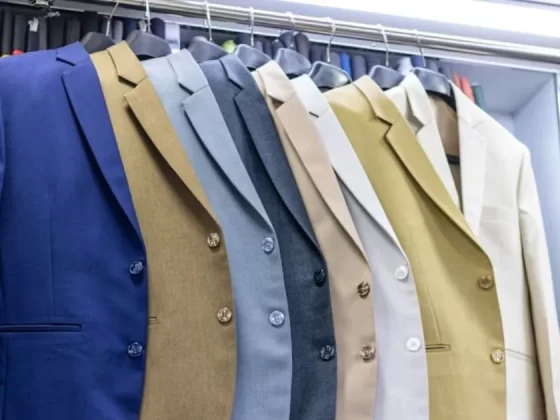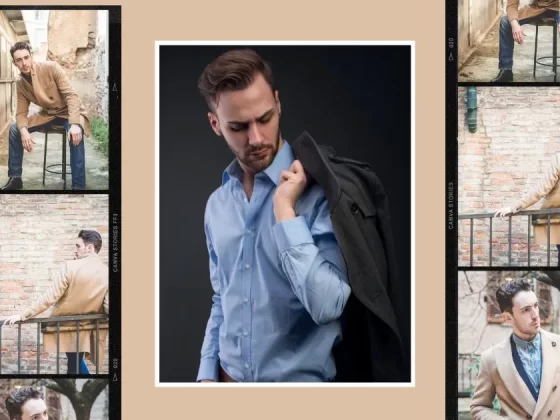The second-hand menswear market has evolved from a niche interest into a substantial segment of the global fashion industry. What was once considered a practical way to save money or access unique clothing has evolved into a trend that is now embraced by style-conscious men, sustainability advocates, and collectors alike. Today, the market encompasses thrift shopping, vintage hunting, and resale platforms, offering a wide range of options for men seeking style, affordability, and individuality.
Understanding the appeal of second-hand menswear starts with recognizing its unique benefits. One of the most apparent advantages is affordability. Men can find high-quality clothing at a fraction of the original price, making it easier to experiment with trends or invest in timeless pieces without breaking the bank. Beyond price, second-hand clothing often provides access to unique items that are no longer in production. Vintage jackets, limited-edition sneakers, or classic designer pieces offer a distinct style that sets wearers apart in a world dominated by mass-produced fashion.

Sustainability plays a crucial role in the growing popularity of second-hand menswear. The fashion industry is one of the most significant contributors to global waste, with millions of tons of garments ending up in landfills each year. By choosing pre-owned clothing, men can reduce their environmental footprint, support circular fashion, and make a tangible impact on sustainability. For many consumers, buying second-hand is no longer just a cost-saving measure; it has become a lifestyle choice. It is a deliberate choice that aligns with a broader lifestyle centered on environmental responsibility and ethical consumption.
Second-Hand Menswear Market is Redefining Fashion
Thrift Shopping
Thrift stores have long been a staple for those seeking affordable clothing, and their appeal for men has expanded significantly. Thrift shopping offers a treasure hunt experience, allowing individuals to explore a diverse range of garments from various eras, brands, and styles. Men can find everyday staples, such as well-fitting jeans, casual shirts, and jackets, often from brands known for their durability.
One key benefit of thrift shopping is that it encourages experimentation. Men can try styles they might not normally wear without committing to a full-price purchase. For instance, a classic corduroy blazer from the 1980s might be paired with contemporary trousers to create a modern yet retro look. Additionally, thrift stores often feature local or small-scale brands that are not available in mainstream retail, allowing shoppers to support emerging designers and independent producers.
The experience of thrift shopping also adds value beyond the garments themselves. For many men, browsing a thrift store is a social and recreational activity. Weekend trips to vintage markets or charity shops become a way to explore neighborhoods, connect with like-minded enthusiasts, and discover hidden gems. This community aspect enhances the appeal of thrift shopping, turning it into a cultural experience as much as a fashion choice.
Vintage Menswear
Vintage menswear represents the intersection of history, style, and storytelling. Unlike regular second-hand clothing, vintage pieces are typically at least 20 years old and often hold historical or aesthetic significance. Collectors and fashion enthusiasts appreciate vintage menswear for its craftsmanship, high-quality materials, and intricate design details, which are often absent in modern fast fashion.
A vintage leather jacket from the 1970s, a tailored wool blazer from the 1950s, or a pair of hand-stitched Oxford shoes from the 1960s offers more than just style. These items provide a sense of heritage and identity. Men who wear vintage clothing often feel a connection to the era from which the garments originated. Wearing a well-preserved vintage piece communicates personal taste, attention to detail, and a respect for fashion history.
The demand for vintage menswear has also led to the rise of specialized stores and online platforms. Retailers curate collections that emphasize authenticity, condition, and provenance, making it easier for buyers to identify and invest in high-quality pieces. Popular online platforms now allow men to browse vintage collections from around the world, compare prices, and read detailed descriptions of garment history. The accessibility of vintage clothing has transformed it from a niche hobby into a mainstream interest for fashion-conscious men.
Resale Platforms
The growth of resale platforms has transformed second-hand menswear into a global marketplace. Online resale platforms, such as Grailed, Depop, and The RealReal, offer men a vast selection of pre-owned clothing from around the world. These platforms cater to a diverse audience, including men seeking streetwear, designer labels, sportswear, and rare collector’s items.
One of the key advantages of online resale is convenience. Men can shop from the comfort of their homes, filter searches by size, brand, or style, and often access authentication services to ensure the garments are genuine. Sellers, on the other hand, benefit from a global audience that increases the chances of selling their items quickly and at a fair price. This digital marketplace has professionalized the resale market, turning what was once a casual activity into a lucrative side business or even a full-time venture for some.
Resale platforms also contribute to sustainability and the slow fashion movement. By enabling the resale of high-quality garments, these platforms extend the life cycle of clothing, reducing the demand for new production. They enable men to refresh their wardrobes without contributing to environmental degradation, thereby reinforcing the cultural shift toward conscious consumption.
How to Navigate the Second-Hand Menswear Market
For men interested in exploring second-hand fashion, there are several strategies to navigate the market effectively. First, it is essential to understand sizing and fit. Vintage and thrift garments may employ different sizing standards than modern clothing, so it is essential to try on items or check detailed measurements.
Second, the condition is key. Inspect garments for wear, stains, or damage. Minor imperfections can often be repaired, but significant flaws may reduce the longevity of the piece. Knowing basic garment care and repair techniques can increase the value and lifespan of second-hand clothing.
Third, authenticity matters. For high-end vintage or designer items, researching brand-specific markers, labels, and construction details can help avoid counterfeits. Online resale platforms often offer guides and authentication services to help buyers make informed decisions.
Finally, men should approach second-hand shopping with patience and an open mind. The hunt for unique pieces is part of the experience. Success often comes from persistence, flexibility, and the willingness to explore different stores, platforms, and markets. Over time, a second-hand wardrobe can evolve into a carefully curated collection of clothing that reflects one’s personal style, history, and values.
The Cultural Impact of Second-Hand Menswear
The rise of second-hand menswear reflects broader cultural trends in fashion, sustainability, and consumer behavior. Millennials and Gen Z, in particular, have driven the popularity of thrift, vintage, and resale, emphasizing individuality, ethical consumption, and a rejection of fast fashion. These generations prioritize authenticity and storytelling in the clothing they wear, often opting for unique, second-hand items over mass-produced alternatives.
Second-hand menswear also encourages creativity in styling. Mixing vintage pieces with contemporary fashion allows men to craft looks that are personal and expressive. For example, pairing a retro graphic tee with tailored trousers and modern sneakers creates a layered aesthetic that is both nostalgic and current. This blending of eras has inspired fashion influencers, stylists, and brands to embrace second-hand items in their collections and campaigns.
Moreover, second-hand shopping challenges traditional perceptions of masculinity in the fashion industry. It promotes experimentation, appreciation of craftsmanship, and environmental responsibility, all while maintaining a balance of practicality and style. Men are increasingly recognizing that personal expression and sustainability can coexist, with second-hand menswear providing a perfect medium for both.
Future Trends in the Second-Hand Menswear Market
The future of second-hand menswear looks promising, with continued growth expected in both physical and digital spaces. Advances in technology, such as AI-driven recommendations and virtual fitting rooms, will make online resale more accessible and personalized. Brick-and-mortar thrift and vintage stores may continue to evolve into lifestyle hubs that combine shopping with experiences, education, and community events.
Collaborations between traditional fashion brands and resale platforms are likely to expand, creating opportunities for consumers to buy authenticated pre-owned items directly from designers. These partnerships may help bridge the gap between high fashion and second-hand shopping, further legitimizing the market.
Sustainability will remain a key driver of the second-hand menswear market. As awareness of environmental impact grows, men will increasingly seek ways to reduce waste, invest in long-lasting garments, and participate in the circular economy. Second-hand clothing offers an accessible and meaningful way to embrace these values while enjoying fashion that is stylish, affordable, and unique.
Lasting Impact of Second-Hand Menswear
The second-hand menswear market has evolved into a vibrant, multifaceted space that combines style, sustainability, and storytelling. Thrift shopping, vintage collecting, and online resale platforms each offer unique opportunities for men to explore fashion while making conscious choices. The appeal of second-hand menswear lies not only in affordability and access to rare items but also in the opportunity to connect with history, culture, and community.
As the market continues to grow, second-hand clothing is poised to play an even larger role in shaping menswear trends, promoting sustainability, and redefining how men approach style. Whether hunting for a vintage leather jacket, browsing a local thrift store, or exploring global resale platforms, men today have more options than ever to build a wardrobe that reflects personality, values, and individuality. The second-hand menswear market is not just a trend; it is a lasting shift in how men experience fashion, one that celebrates creativity, quality, and conscious consumption.




